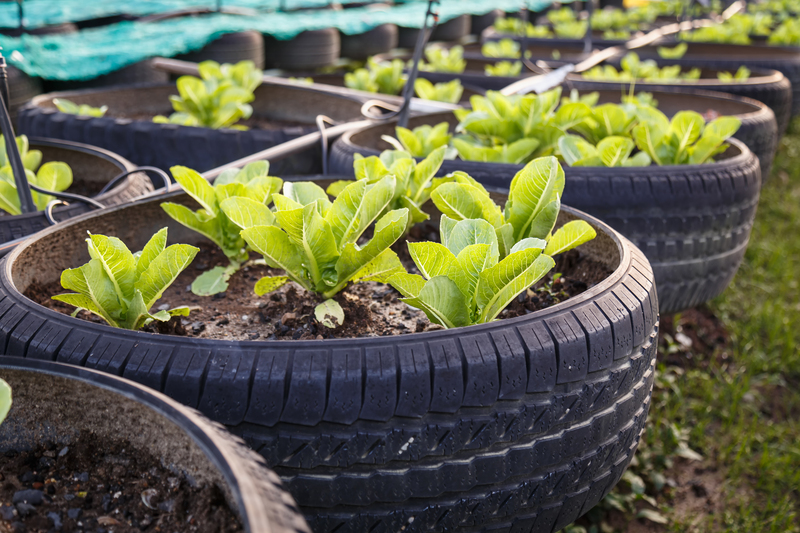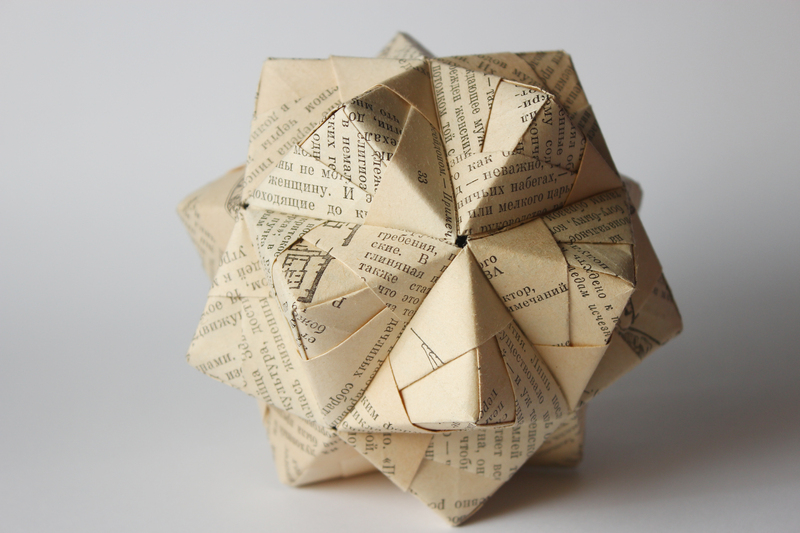Unearth Hidden Potential in Your Trash with Upcycling
Are you aware that the items you throw out daily could be transformed into something valuable, beautiful, or entirely new? Upcycling--a creative approach to reusing and reinventing waste--provides an effective means to uncover the hidden possibilities lurking in your trash. With a bit of imagination and resourcefulness, that pile of unused "junk" at home can morph into art, home decor, or even practical essentials. In this comprehensive guide, we'll dive into the fascinating world of upcycling and show you how to tap into the hidden potential found in everyday rubbish.

What is Upcycling and How Does it Differ from Recycling?
Upcycling is more than just reusing; it's the process of transforming by-products, waste materials, or unwanted products into new items of higher quality or value than the original. Unlike recycling, which usually breaks materials down before remaking them into something else, upcycling reimagines waste directly, creatively giving it new life with minimal processing.
- Upcycling: Adds value and creativity, keeping the original materials largely intact.
- Recycling: Breaks down materials--like melting plastics or paper pulp--prior to remanufacturing.
This distinction makes upcycling a more eco-friendly and imaginative approach to waste reduction, saving energy, and helping minimize landfill contributions.
Why Should We Care About Upcycling Trash?
With skyrocketing global waste production, our planet desperately needs sustainable solutions. According to the World Bank, the world creates over 2 billion metric tons of municipal solid waste annually, and that's expected to rise. Extracting potential from trash with creative upcycling helps address this growing issue, bringing a plethora of benefits:
- Reduces landfill waste and prevents environmental pollution
- Conserves resources by extending the lifespan of materials
- Encourages creativity and personal expression through DIY projects
- Saves money by repurposing rather than purchasing new items
- Creates unique, one-of-a-kind pieces for your home or business
- Supports a circular economy and responsible consumer habits
Everyday Items with Hidden Upcycling Potential
You don't need specialty materials to unleash the magic of upcycling household trash. There's hidden promise in almost anything you're about to toss. Here are some common items just waiting to be turned into treasures:
- Glass jars and bottles: Perfect for organizing, storage, lighting, or rustic decor
- Tin cans: Great for planters, pencil holders, or lanterns
- Plastic containers: Useful for storage, kids' crafts, or unique jewelry
- Old clothes and fabrics: Can become quilts, bags, rugs, or patches
- Wood pallets and crates: Ideal for making furniture, shelving, or wall art
- Cardboard boxes: Easily shaped into organizers, toys, or magazine files
- Broken furniture: Reimagined as garden planters, bookshelves, or even artwork
- CDs and DVDs: Great for making mosaics, mirrors, or crafty decorations
Keep your eyes open--there's potential in almost every piece of trash that enters your home!
The Eco-Friendly Power of Upcycling
Every time you choose to upcycle, you make a conscious environmental impact. Here's how upcycling your trash benefits the planet:
- Reduces resource extraction: Less need for raw materials means less mining, drilling, and deforestation.
- Lowers carbon footprint: Upcycling skips the energy-intensive recycling process and reduces emissions.
- Minimizes chemical use: Fewer new products mean fewer dyes, plastics, and harmful chemicals in production.
- Reinforces sustainability: Upcycling supports a lifestyle that strives for balance and responsible stewardship.
By unlocking the hidden value in your trash with upcycling, you help forge a greener, cleaner tomorrow.
Getting Started with Upcycling: Tips and Creative Ideas
Are you ready to explore the hidden gems in your garbage and start your own upcycling journey? Here's how!
1. Rethink What You Throw Away
The first step in discovering upcycling potential is shifting your perspective. Before tossing anything, ask yourself:
- Can I reuse, repurpose, or upcycle this item?
- Could this serve a new function in another part of my home or yard?
- Would a little paint, glue, or creativity bring it back to life?
2. Gather Basic Upcycling Supplies
You don't need a full woodworking shop or art studio to start; a few simple tools will get you going:
- Hot glue gun and strong adhesives
- Paints, brushes, and sprays
- Scissors, craft knives, and sandpaper
- Screwdrivers, pliers, and basic hand tools
- Decorative papers, fabrics, and ribbons
Pro tip: Build your toolkit over time as you discover the projects you enjoy most.
3. Explore Easy Upcycling Ideas for Beginners
Here are a few effortless ways to access hidden upcycling potential in trash:
- Glass Jar Lanterns: Clean jars, insert tea lights, and hang using wire for a magical outdoor effect.
- Tin Can Planters: Paint empty cans and punch drainage holes--perfect for herbs or succulents.
- T-shirt Tote Bags: Transform old tees by cutting and tying the bottom hem for a no-sew bag!
- Cardboard Drawer Dividers: Cut and glue cardboard into custom-sized organizers for kitchen or office drawers.
- CD Mosaic Art: Break old CDs and glue the reflective pieces onto frames, mirrors, or flower pots for eye-catching sparkle.
These projects are simple, yet they highlight the creative possibilities hidden in everyday waste.
4. Upcycling Projects for the Adventurous
Once you've tackled the basics, challenge yourself with larger projects that make a transformative impact:
- Pallet Furniture: Make a rustic coffee table, garden bench, or bookshelves using reclaimed wood pallets.
- Bottle Cap Backsplash: Save hundreds of bottle caps to create a colorful and durable kitchen backsplash.
- Jeans Bottle Carrier: Upcycle denim legs into durable wine or water bottle holders.
- Broken Dresser Garden Bed: Turn a rickety dresser into a tiered garden for herbs and flowers.
- Umbrella Skeleton Light: Use the frame of a broken umbrella, string lights, and sheer fabric to create a whimsical lamp.
*Let your imagination run wild! The only limit is your creativity.*
Upcycling and the Circular Economy
Upcycling is a critical component of the growing circular economy, a sustainable economic model where resources are continuously reused instead of discarded. By unearthing the hidden value in your trash through upcycling, you:
- Keep materials in use for longer, reducing the need for new goods
- Help transition away from our wasteful "take-make-dispose" culture
- Contribute to zero waste and sustainable living movements
A circular economy relies on everyone's participation. Each upcycled craft, piece of furniture, or repurposed fabric makes a difference!
Upcycling Communities and Inspiration Online
The internet is bursting with upcycling inspiration and communities dedicated to sharing ideas, successes, and how-tos. Here are a few favorite places to fuel your creative upcycling journey:
- Instagram and Pinterest: Search hashtags like #upcycling, #trashtotreasure, or #repurpose
- YouTube: DIY video tutorials for every skill level and material imaginable
- Facebook Groups: Join local or global groups to swap ideas, tips, and supplies
- Reddit: Communities like r/Upcycling or r/DIY are goldmines of information
- Sustainable living blogs: Follow specialists who share step-by-step project guides and creative hacks
You never have to upcycle alone. Engage with fellow makers, share your projects, and pick up new techniques from across the globe.
Tips to Maximize Your Upcycling Success
- Start small: Choose easy, low-cost projects at first to gain confidence
- Quality over quantity: Focus on craftsmanship to ensure your creations are durable and beautiful
- Think outside the box: The most creative upcycled items are often the most unexpected
- Involve your family: Upcycling is a fantastic learning activity for children and a bonding opportunity
- Be safe: Use proper protective equipment and adhere to safety precautions, especially when cutting, drilling, or working with old materials
Frequently Asked Questions About Upcycling Trash
Can I really turn any trash into something useful or beautiful?
While not every piece of waste is safe or practical to reuse (think hazardous or heavily soiled materials), most household trash items can be upcycled with creativity. Always be cautious and clean items thoroughly before repurposing them.
Is upcycling expensive to start?
Not at all! Most upcycling relies on materials you already have at home. At first, you may need basic adhesives or paint, but otherwise it's a low-cost--or even zero-cost--hobby.
Does upcycling really make an environmental difference?
Absolutely. Each time you transform waste into a new item, you prevent that object from entering the landfill and help reduce the need for manufacturing new products. Multiply that by millions of households, and the collective environmental impact is substantial.
Upcycling Success Stories: See the Transformation
To inspire you, here are a few remarkable examples of what people have achieved by unearthing hidden potential in their trash through upcycling:
- Bottle Cap Mosaics: Artists worldwide have used discarded bottle caps to make stunning murals and public art installations, turning simple waste into cultural treasures.
- Furniture from Pallets: In homes and cafes around the world, entire decor schemes rely on stylish, sturdy upcycled pallet furniture--saving money and resources.
- Denim Patchwork Quilts: Old jeans cut into squares and sewn together become beautiful, functional quilts, preserving memories while keeping textiles out of landfills.
- Recycled Bike Parts Sculptures: Artists craft intricate statues and garden art from worn-out gears, frames, and wheels, blending industrial and natural beauty.

Your Upcycling Checklist: Start Unearthing Today!
Ready to uncover the hidden value in your trash? Here's how to start:
- Identify reusable or upcyclable items in your waste
- Clean and store materials you want to repurpose
- Gather basic tools and tutorials online for inspiration
- Start with a simple project--don't be afraid to experiment
- Share your creations with friends, family, or social media communities
- Be consistent; the more you upcycle, the more creative you'll become
Conclusion: Unleash the Hidden Potential of Your Trash with Upcycling
What was once seen as garbage is now a blank canvas for innovation and environmental stewardship. By upcycling household waste, you actively contribute to reducing pollution, conserving natural resources, and breathing new life into forgotten items. The next time you stand with trash in hand, pause. Ask: "What could this become?"
*Start small, stay curious, and inspire those around you. Together, we can foster a culture of creativity and responsibility--one upcycled masterpiece at a time.*
Unlock the hidden potential in your trash today with upcycling--and watch your waste become wonders!
